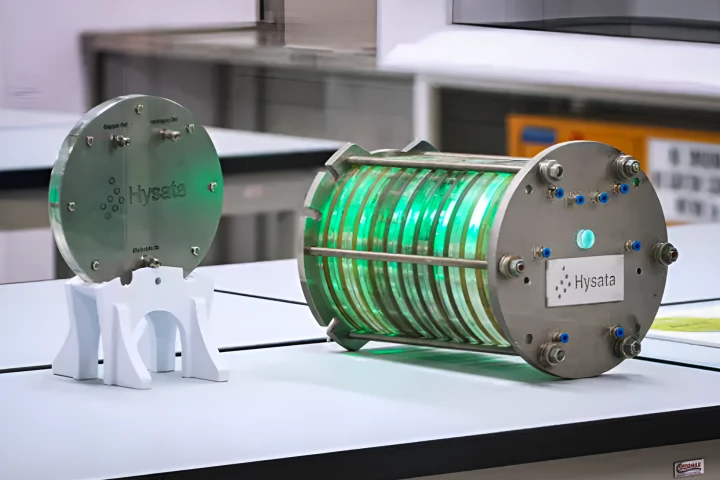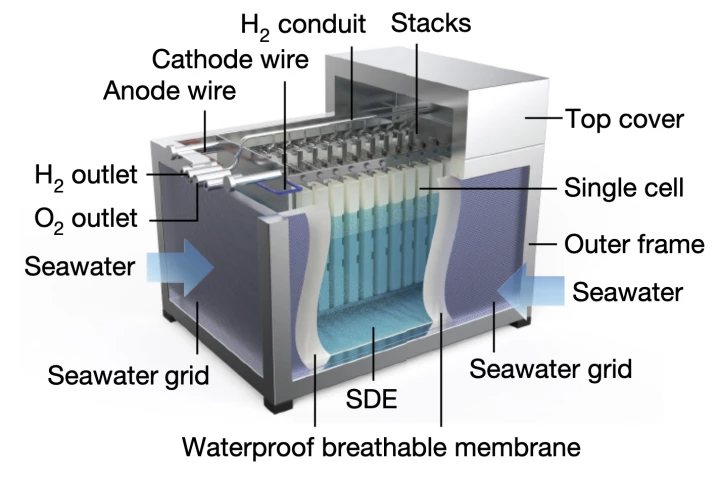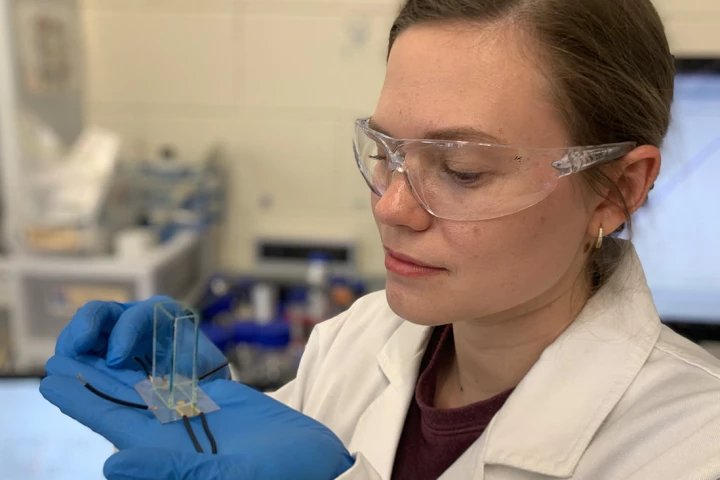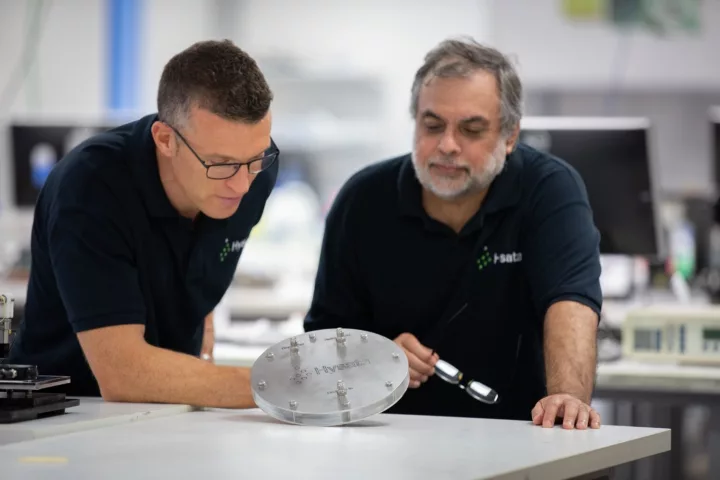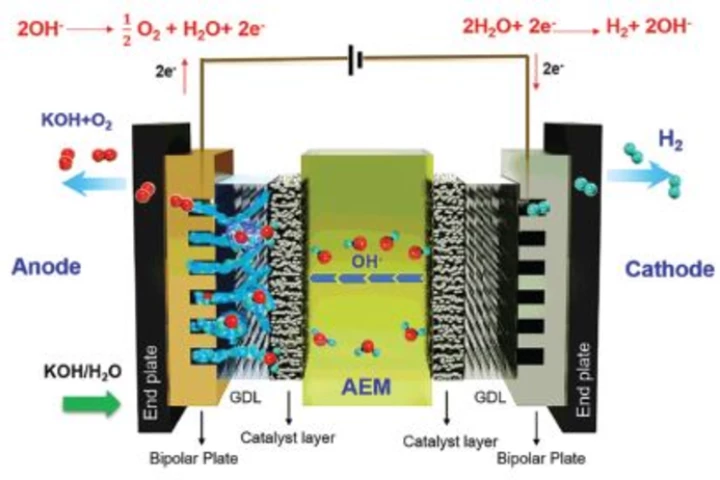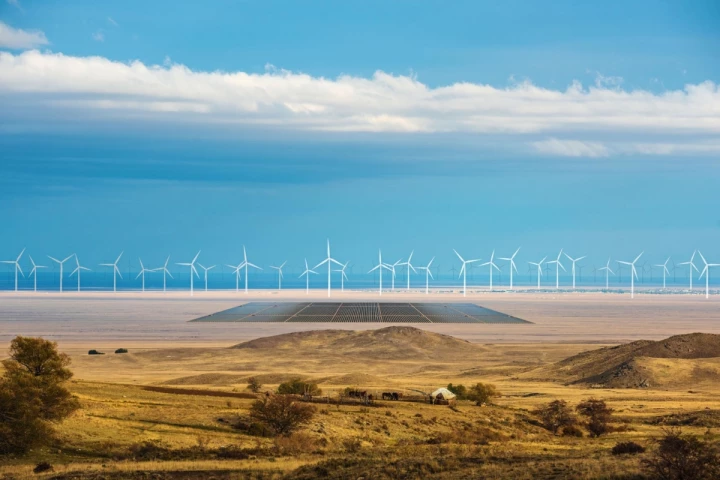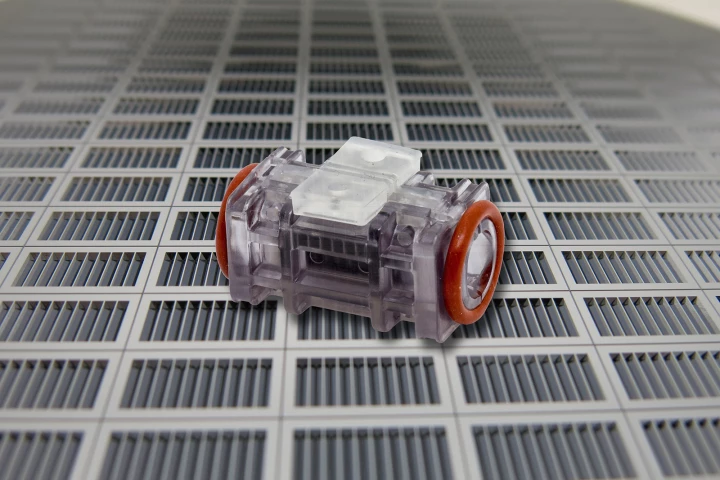Electrolysis
-
Hysata promises the world's cheapest hydrogen, thanks to a remarkable device that splits water into H2 and O2 at 95% efficiency – some 20% higher than the best conventional electrolyzers. The company has raised US$111 million to scale up production.
-
Green hydrogen is going to demand a lot of water for electrolysis – nine liters of pure water for every kilogram of hydrogen. Researchers say they've found a simple way to use seawater in standard electrolyzers, and that's big news for clean energy.
-
Chinese researchers say they've demonstrated a seawater electrolyzer that works as efficiently as a commercial freshwater electrolyzer for months on end without corroding itself to death. It also looks like these machines could harvest lithium, too.
-
RMIT researchers say they've unlocked cheaper, more energy-efficient green hydrogen production with a new electrolysis technique boosted by sound waves. With these high-frequency vibrations active, standard electrolysis produces 14x more hydrogen.
-
Australian researchers have demonstrated a way to electrolyze hydrogen straight out of the air, anywhere on Earth. The Direct Air Electrolyzer absorbs and converts atmospheric moisture – even down to a "bone-dry" 4% humidity – without fresh water.
-
A kilogram of hydrogen holds 39.4 kWh of energy, but typically costs around 52.5 kWh of energy to create. Hysata says its capillary-fed electrolyzer cell slashes that energy cost to 41.5 kWh, smashing efficiency records and lowering green H2 prices.
-
Electrolysis is a key component of the cost of green hydrogen, and a Korean team says it's made a huge breakthrough with an anion exchange membrane that's not only cheaper than current proton exchange tech, but offers some 20 percent better performance.
-
Combining two forms of sustainable energy into one, Swiss Sustainable Yachts' Aquon One catamaran harnesses solar energy to create its own hydrogen, powering a fuel cell drive to potentially limitless autonomy.
-
Germany's Svevind has announced plans for a colossal green hydrogen project that will place some 45 gigawatts of wind and solar energy generation on the vast steppes of Kazakhstan to produce around three million tonnes of green hydrogen annually.
-
Although ozone is used to disinfect water in settings such as treatment plants, the required equipment is typically too large for use in small appliances like water coolers. A new miniaturized ozone generator, however, may be about to change that.
-
Weight is a premium on space launches, so the less we have to take with us, the better. Now engineers have developed a new electrolysis device that may be able to convert very salty Martian water into breathable oxygen and hydrogen for fuel.
-
Engineers at the University of Liverpool have developed a robot scientist that can autonomously perform experiments, analyze results and decide what to do next based on those results – and it’s already making new discoveries on its own
Load More
